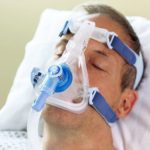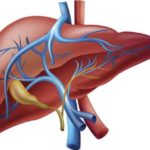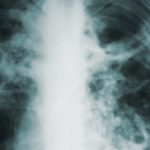Symptoms of the swine flu – how to diagnose it?
Swine flu/influenza is an acute respiratory illness caused by infection with the influenza group of viruses. The disease affects the respiratory tract. The mode of transmission of this disease is by coughing and sneezing. Outbreaks of illness are of variable extent and severity occurs frequently. Such outbreaks result in significant morbidity (having a disease, being disabled, or having poor health) in the general population and in increased mortality (death) rates among high-risk patients, mainly as a result of complications involving the lungs.
Occasional cases of influenza are transmitted from pigs to humans. An outbreak of swine ‘flu’ began in 2009, initially in Mexico and then spread around the world. The causative strain is an H1N1 strain that has significant genetic variations from human strains of H1N1. This new sub-type of influenza A (H1N1) virus has segments from four influenza viruses: North American Swine, North American Avian, Human Influenza, and Eurasian Swine. Clinical features of infections with this strain are similar to an influenza-A infection, although some cases have more prominent enteric (related to gastro-intestinal tract) features.
Clinical features and symptoms of the swine flu
The incubation period of the disease is 1 to 7 days. The incubation period is the duration between exposure to an infection and the appearance of the first symptoms. This disease remains communicable from one day before to seven days after the onset of symptoms or till the resolution of the illness.
The systemic signs and symptoms are fever, cough, sore throat, headache, body ache, fatigue, diarrhea, vomiting, and weakness. People with extremes of age or with pre-existing diseases are at higher risk of complications like sinusitis (inflammation of sinuses), otitis media (middle ear infection), pneumonia (lung infection), bronchiolitis (infection of respiratory passage), status asthmatics (attack of asthma), myocarditis (inflammation of the heart), pericarditis (inflammation of the outer covering of the heart), myositis (inflammation of muscles), rhabdomyolysis (breakdown of muscle proteins), encephalitis (brain inflammation), seizures (fits), secondary bacterial pneumonia with or without sepsis.
Diagnosis of swine flu
For confirmation of diagnosis, specimens like a nasopharyngeal swab, throat swab, nasal swab, and tracheal aspirate (for intubated patients) are obtained. Confirmation of influenza A(H1N1) swine-origin infection is done through one or more of the following three tests: Real-time RT PCR (Real-time Reverse transcriptase-polymerase chain reaction), isolation of the virus in culture, or a four-fold rise in virus-specific neutralizing antibodies.
Prevention of swine flu
- It involves good infection control with hand hygiene to preclude dissemination through fomites (an inanimate object or substance, such as clothing, furniture, or soap that is capable of transmitting infectious organisms from one individual to another). The virus can survive in the environment for a variable period of time (hours to days) Cleaning followed by disinfection should be done for contaminated surfaces and equipment. The virus is inactivated by many disinfecting agents like 70% ethanol, 5% benzalkonium chloride (Lysol), and 10% sodium hypochlorite.
- Prevention of dissemination of infection by droplet infection (coughing, sneezing) through the use of high-efficiency masks (N95 mask), isolation of patients, and barrier nursing through use of ‘Personal Protective Equipment (PPE includes cap, three layered surgical mask, gloves, and gown, protective eyewear) while treating the patients.
- Vaccination – It is recommended that people from high-risk groups be vaccinated against the H1N1 virus. This includes people with chronic diseases involving lungs, heart, kidney, and liver. It also includes people with Parkinson’s disease, diabetes mellitus, pregnant women, and people aged over 65 years.
Treatment
- Antiviral drugs – Oseltamivir and Zanamivir are used for treatment. Oral Oseltamivir (75 mg 12-hourly) or inhaled Zanamivir (10 mg 12-hourly) given to adult patients for 5 days can reduce the severity of symptoms if started within 48 hours of the onset of symptoms. For children, the dosage depends on body weight. Antiviral drugs can also be used for prevention in high-risk individuals during the ‘flu season. Resistance can emerge to all of these agents.
- Supportive therapy – the seriously ill patients may require admission and supportive treatment in the form of IV fluids, oxygen inhalation, antibiotics for superadded bacterial infections, and intravenous nutrition.
- Aspirin is strictly contra-indicated in any influenza patient and especially in children due to the risk of Reye’s syndrome (rash, vomiting, and liver damage) with a high fatality rate.




























